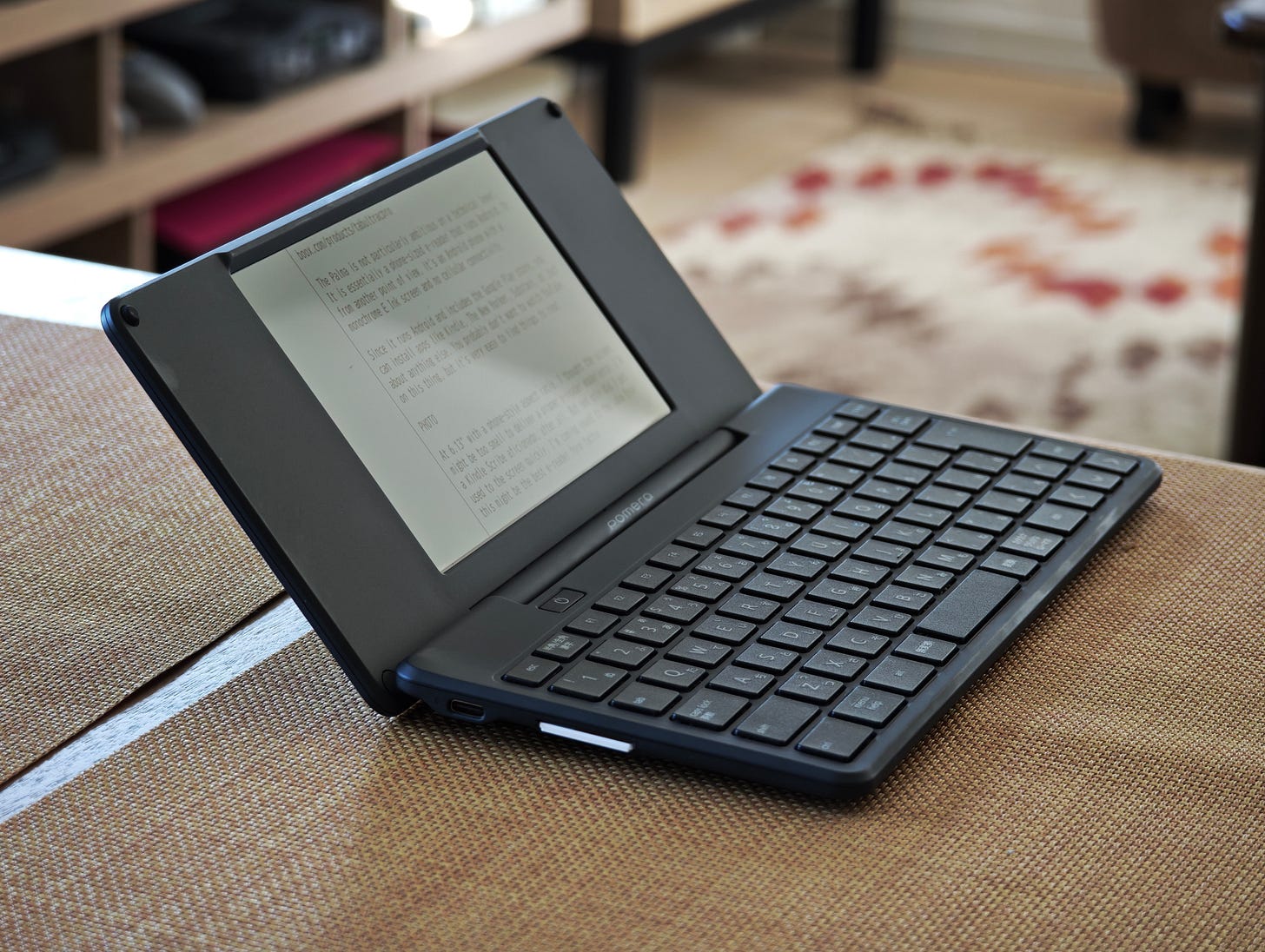The Pomera DM250 is great for writing when you know what you want to write
King Jim's cult typewriter goes global
I didn’t really plan on writing about obscure-outside-Japan stationery-maker King Jim twice to kick off 2025, but here we are. It turns out the company is actually releasing a product outside of Japan for once, and just like the Kakumiru, it’s one I’ve owned for years and use all the time.
The Pomera DM250 is a writing-focused device that’s available to order on Indiegogo until next week. Unlike many Indiegogo projects, this is an actual product that already exists, so I wouldn’t doubt the company’s ability to ship it.
The DM250 came out in 2022 and is the latest in a long line of Pomera word processors. The first one, the DM10, was released in 2008, which I remember vividly because this was the same month I moved to Japan and it was heavily promoted in all the giant Osaka electronics stores I spent half that month walking around with wide eyes.
The DM10 had a small, squarish monochrome LCD and a keyboard that folded in on itself so that the whole contraption could be reasonably pocketable. It was chintzy but somehow beguiling. I did not yet have a use for one but strongly felt that somehow one day I would.
The Pomera line proved popular enough for several revisions; King Jim itself produced a handy historical rundown to commemorate the series’ tenth anniversary. There have been two basic Pomera designs — the fold-out type like the DM10, which peaked with the E Ink DM30 in 2018, and the mini-laptop style starting with the DM100 in 2011.
This DM250 is the latest Pomera model and the most recent evolution of the mini-laptop type. It was quite a minor update to its predecessor even when it was released, but it did make some crucial changes.
In fact, it’s curious that King Jim is attempting to sell the DM250 overseas a few years later, because many of its upgrades over the DM200 make it seem like that was the plan in the first place. Not only was this the first Pomera model with English menus, the text files support Unicode (UTF-8) rather than just Japanese and ASCII, making for much easier file exporting. Between that and the addition of a USB-C port, I figured I could finally use a Pomera for real, rather than just owning one for the heck of it.
Keep reading with a 7-day free trial
Subscribe to Multicore to keep reading this post and get 7 days of free access to the full post archives.




